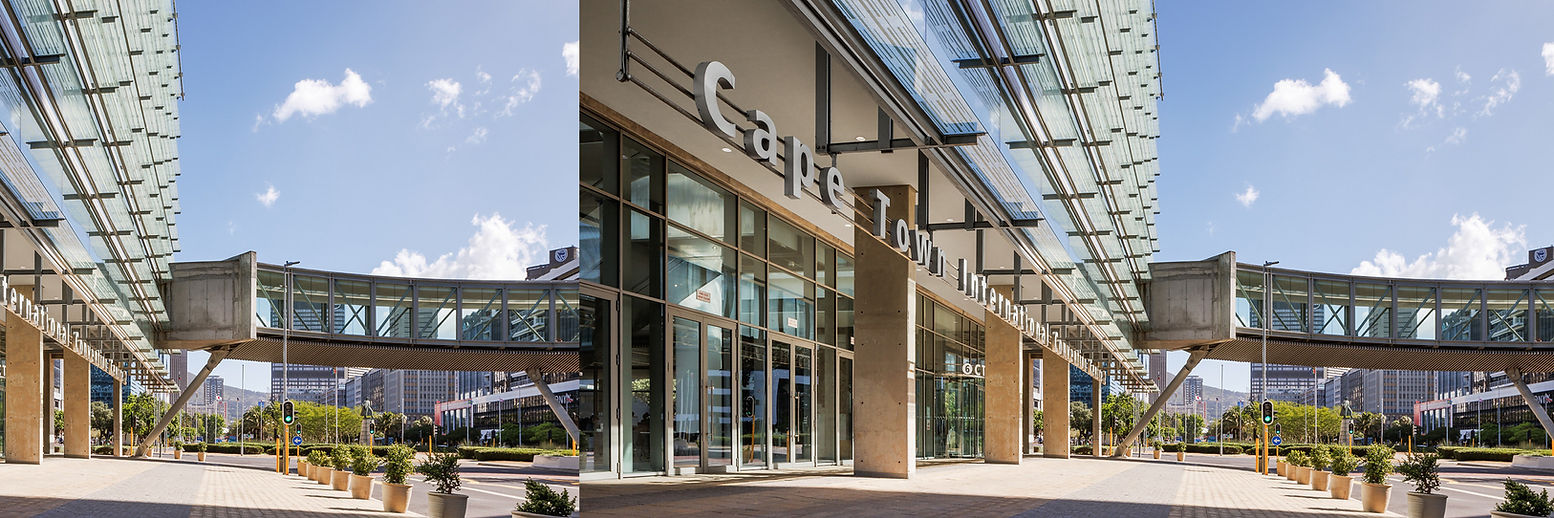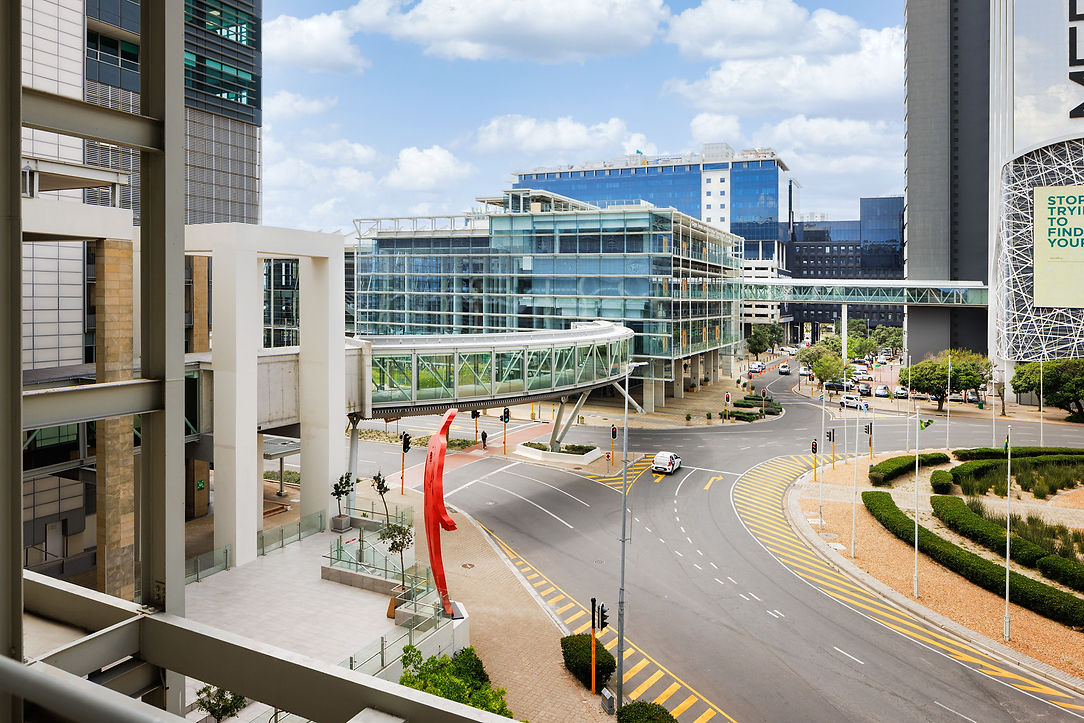




A LEGACY



2023/24 AT A GLANCE
In the past financial year, we achieved a revenue of R400.7m, a significant improvement from R278.0m in the previous year. Additionally, we remained profitable, with a strong earnings before interest, taxation, depreciation and amortisation (EBITDA) of R82.5m. These milestones are pivotal in weaving the legacy we envision, as each financial success strengthens the intricate fabric of our long-term growth and resilience.

THE REPORT
Hover your mouse over the different coloured threads to reveal the site navigation.





ABOUT THE CTICC
WEAVING TOGETHER OUR MANDATE
The CTICC has been Cape Town and South Africa’s premier international convention centre and the foremost conference venue on the African continent for 21 years. It has achieved this iconic status in collaboration with its shareholders and stakeholders. Our complex offers a world-class venue for conferences, exhibitions, trade fairs, banquets, concerts, film and photo shoots and stage productions, as well as business and government meetings of any size and stature.
Our mandate is to create jobs and contribute to the local economy. We are also committed to supporting our community, in the belief that building belonging, encouraging self-reliance and inspiring innovation are key contributors to our broader long-term impact.”


LEGACIES FOR LIFE
MAKING AN IMPACT FOR 21 YEARS
Since inception, the CTICC has served as both an asset to the city and its people. Our economic contributions are the foundation of this. We have cumulatively created over 169 000 jobs and contributed R66.9bn to the national economy, which has benefited our local and national fiscus, as well as put food on the table and roofs over heads. We’ve also contributed positively to the social and environmental fabric of our city, province and country. We highlight some of the initiatives that are making a positive impact to people and planet, weaving lasting legacies – now and into the future.
ACHIEVEMENTS OVER 21 YEARS OF EXISTENCE


OUR EVENTS
REBUILDING OUR BUSINESS
In the 2024 financial year, we hosted 368 events. Although this figure is 13.8% lower than the previous year, our delegate numbers increased from 274 880 to 310 985 (13.1%). Addtionally, the average attendance per event grew by 31.2%, from 644 to 845 delegates per event. More significantly, we saw a substantial 30.3% rise in the number of international events, from 33 in the previous financial year to 43 in the year under review. We believe this growth was driven by the value our venue and destination offer, along with the established professionalism and flexibility of our offering.

368
TOTAL EVENTS
310 985
TOTAL ATTENDESS


OUR ECONOMIC REVIEW
CRAFTING A FUTURE OF ECONOMIC RESILIENCE
The CTICC’s financial performance has rebounded very well, despite the challenging local and global socio-economic conditions. We returned an earnings before interest, depreciation and amortisation (EBITDA) of R82.5m, which is 81% higher than the previous year’s figure of R45.7m, as well as 96.5% above budget. Net profit for the year in review was also a pleasing R242.7m, against R17.bm in the previous financial year. This encouraging improvement has allowed us to make deeper and more meaningful economic contributions in the year under review.


OUR SOCIAL IMPACT
WORKING TOGETHER FOR OUR COMMUNITIES
The year in review has been one of consolidation and partnership, benefiting both our local community partners (LCPs) and a range of additional community beneficiaries. We continued contributing practically and tangibly to environmental, social and governance (ESG) objectives and, through our activities together, we made a difference where it was needed most. Our corporate social responsibility (CSR) commitment amounted to R737 469 for the 2023/24 financial year. We believe that our impact has increased due to strengthening and growing our LCP relationships, as well as increasing our collaborative approach.


OUR PEOPLE
SOARING TO NEW HEIGHTS
The CTICC’s significant business revival during the year under review allowed us to deliver deeply on our already strong commitment to staff development. Not only have we successfully accessed funding from two major additional sources – the South African government’s Youth Employment Service (YES) and the Culture, Arts, Tourism, Hospitality and Sport Sector Education and Training Authority (CATHSSETA) – but we’ve also spent R6.7m of our own money on training. This is more than double last year’s spend. Thanks to our 219 staff, we are well on our way to weaving a legacy.
“Our commitment to nurturing and developing talent has been further boosted by our ability to offer, for the first time, 17 bursaries to our employees, empowering them to enhance their skills and contribute more effectively to our business.”


OUR ENVIRONMENT
A COMMITMENT THAT MATTERS MORE THAN EVER
In the 2024 financial year, we strengthened our environmental, social and governance (ESG) impact, reaffirming our commitment to sustainability. We upheld the United Nations Global Compact (UNGC) and achieved all 17 Sustainable Development Goals (SDGs) while advancing the Net Zero Carbon Events initiative. We used 55 348 kL of water and 48 908.50 gigajoules of energy. Greenhouse gas emissions amounted to 14 595 metric tonnes. All our figures increased due to the rise in delegate numbers. However, we have now established a new post-Covid baseline for future comparisons.


GOVERNANCE
CREATING A CULTURE OF BEST PRACTICE GOVERNANCE
The Board of Directors is committed to upholding good ethical standards and applying corporate governance principles in accordance with the King IV Report on Corporate Governance for South Africa, 2016™ (“King IV™”). During the year under review, we engaged with key stakeholders.
"King IV encourages organisations to take a proactive approach to corporate governance, which is exactly what the CTICC is doing"


OUR FUTURE
WEAVING A NEW TOMORROW
The CTICC is committed to creating impact that extends beyond economic contributions, recognising that social and environmental progress must also accompany financial success. Through established and new partnerships across global and local networks, we hope to drive positive change. However, as the conventions industry evolves, we need to prioritise resilience and relevance, which is why we will be focusing on customer-centred investments in technology and infrastructure, integrating digital solutions with physical spaces, and exploring new opportunities beyond hospitalities rather than just following trends.
“The CTICC is confident that it has the right plans, people and resources in place to counter these ongoing industry challenges.”


ANNUAL FINANCIAL STATEMENTS
OUR FULL FINANCIAL REPORT FOR 2023/24
The Annual Financial Statements consist of the Directors' Responsibility Statement, the Report of the Directors, the Risk Management Report, the Company Secretary’s Certificate, the Board Committee Reports, the Report of the Auditor-General, the Statements of Financial Position and Performance, the Statement of Changes in Net Assets, the Cash Flow Statement, the Statement of Comparison of Budget and Actual Amounts, Accounting Policies, as well as the Notes to the Financial Statements and General Information.






























